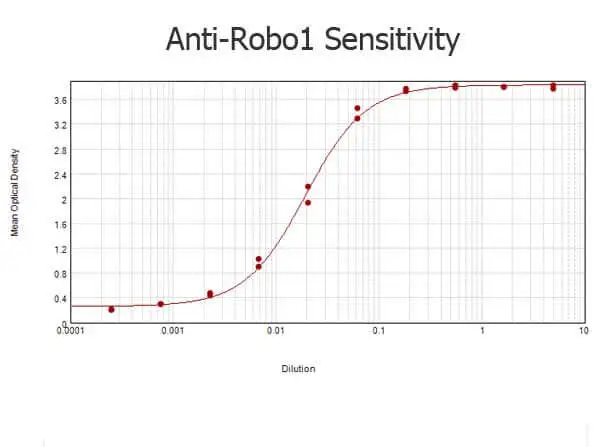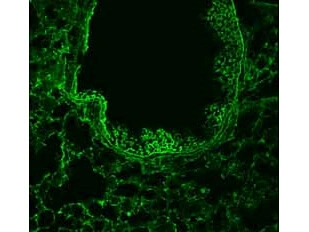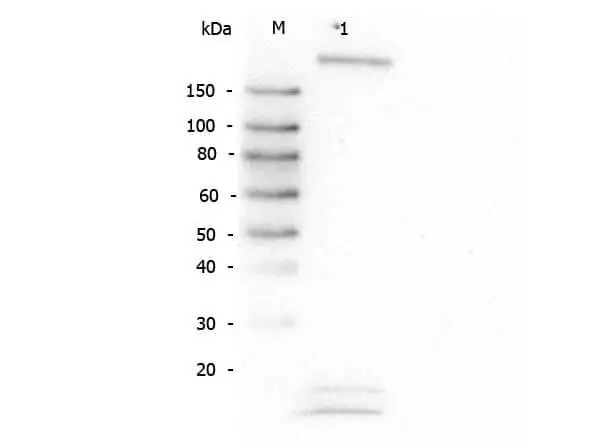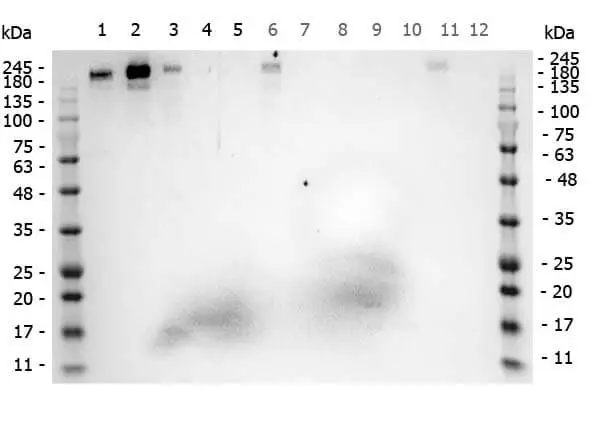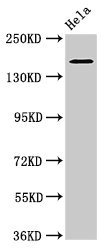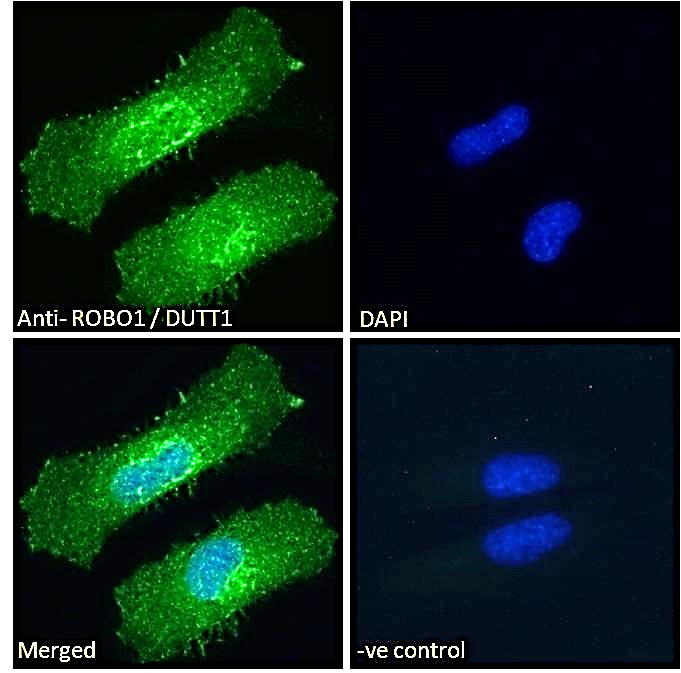
1/50 staining mouse lung tissue sections (adult, frozen 100microm wholemount sections) by IHC-Fr. The tissue was paraformaldehyde fixed and permeabilized with polyethylene glycol tert-octylphenyl ether before incubation with the antibody (GTX36928) for 16 hours at 4oC.
ROBO1 antibody
GTX36928
ApplicationsImmunoFluorescence, ImmunoPrecipitation, Western Blot, ELISA, ImmunoCytoChemistry, ImmunoHistoChemistry, ImmunoHistoChemistry Frozen, ImmunoHistoChemistry Paraffin
Product group Antibodies
TargetROBO1
Overview
- SupplierGeneTex
- Product NameROBO1 antibody
- Delivery Days Customer9
- Application Supplier NoteWB: 1:500-1:3000. IHC-P: 2-10 microg/mL. IHC-Fr: 2-10 microg/mL. ELISA: 1:30000-1:60000. *Optimal dilutions/concentrations should be determined by the researcher.Not tested in other applications.
- ApplicationsImmunoFluorescence, ImmunoPrecipitation, Western Blot, ELISA, ImmunoCytoChemistry, ImmunoHistoChemistry, ImmunoHistoChemistry Frozen, ImmunoHistoChemistry Paraffin
- CertificationResearch Use Only
- ClonalityPolyclonal
- Concentration0.98 mg/ml
- ConjugateUnconjugated
- Gene ID6091
- Target nameROBO1
- Target descriptionroundabout guidance receptor 1
- Target synonymsCPHD8, DUTT1, NORS, NYS8, SAX3, roundabout homolog 1, deleted in U twenty twenty, roundabout, axon guidance receptor, homolog 1
- HostRabbit
- IsotypeIgG
- Protein IDQ9Y6N7
- Protein NameRoundabout homolog 1
- Scientific DescriptionROBO-1 (also called Roundabout homolog 1 precursor and Deleted in U twenty twenty (DUTT)) functions as a receptor for SLIT1 and SLIT2. The SLIT proteins are thought to act as a molecular guidance cue in cellular migration, including axonal navigation at the ventral midline of the neural tube and projection of axons to different regions during neuronal development. In axon growth cones, the silencing of the attractive effect of NTN1 by SLIT2 may require the formation of a ROBO1-DCC complex. ROBO-1 may also be required for lung development. ROBO-1 is a type I membrane protein. ROBO-1 is a widely expressed protein with the exception of the kidney. Defects in ROBO1 may be a cause of breast and lung cancer. ROBO-1 maps within a region of overlapping homozygous deletions characterized in both small cell lung cancer cell lines (SCLC) and in a breast cancer cell line. Multiple splice variants have been identified for this protein.
- Storage Instruction-20°C or -80°C,2°C to 8°C
- UNSPSC12352203

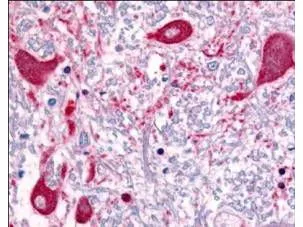
![Western blot using Affinity Purified anti-ROBO-1 antibody (GTX36928) shows detection of a band at ~181 kDa corresponding to ROBO-1 present in mouse brain lysate (arrowhead). Approximately 35 microg of lysate was separated by 4-8% SDS-PAGE and transferred onto nitrocellulose. After blocking the membrane was probed with the primary antibody diluted to 1:1,000. Reaction occurred 2h at room temperature followed by washes and reaction with a 1:10,000 dilution of infrared 800 conjugated Gt-a-Rabbit IgG [H&L] MX for 45 min at room temperature. Infrared 800 fluorescence image was captured using the OdysseyR Infrared Imaging System developed by LI-COR. Western blot using Affinity Purified anti-ROBO-1 antibody (GTX36928) shows detection of a band at ~181 kDa corresponding to ROBO-1 present in mouse brain lysate (arrowhead). Approximately 35 microg of lysate was separated by 4-8% SDS-PAGE and transferred onto nitrocellulose. After blocking the membrane was probed with the primary antibody diluted to 1:1,000. Reaction occurred 2h at room temperature followed by washes and reaction with a 1:10,000 dilution of infrared 800 conjugated Gt-a-Rabbit IgG [H&L] MX for 45 min at room temperature. Infrared 800 fluorescence image was captured using the OdysseyR Infrared Imaging System developed by LI-COR.](https://www.genetex.com/upload/website/prouct_img/normal/GTX36928/GTX36928_20160330_WB_w_23060819_571.webp)
